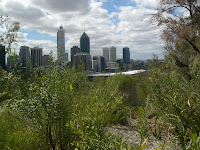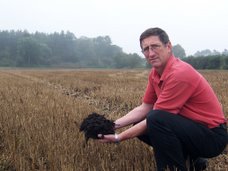In reverse chronological order...
Skied in Avoriaz again with the Martlesham boys. Good snow.
Summer 2008 we holidayed in the south of France.
June 27th 2008, the graduation day for my long awaited PhD - only 7 years in the making.
May 14th 2008, had my knee cartilidge operated on so am on crutches for 8 weeks
May 11th 2008, passed my coastal skipper course and exam so am now free to roam the world.
43 points in the April golf stableford, handicap cut to 13 again.
Had a great holiday in Avoriaz with the lads from

Martlesham Leisure in January 2008. The snow was good including a 30cm load on the Friday night for some tough skiing on the last day. I did not go down the 'Wall' behind me!
Cornwall, Summer 2007, started by a drive through rain on the Saturday but the Doom beer on arrival picked up spirits. On Sunday the rain cleared and we checked out Lamorna (rocky path), Porthcurno (and saw basking sharks) followed by Sennen Cove. On Monday we walked to Mousehole for coffee, had a pasty in Penzance and then lazed on Porthcurno beach. Next day we went to the Eden Project and on Wednesday back to Sennen beach for some bodyboarding and a walk up to the headland. Thursday was a walkabout at St Ives with a proper walk at the Lizard next day. Good bodyboarding at St Ives on Saturday - plus our wedding anniversary, so a posh meal out. Lazy Sunday and a bit of a walk in some drizzle pm. Monday walked around Pendeen lighthouse, pub lunch in Marazion and over to St Michael's Mount at low tide. Sennen Beach again but windy and cool on Tuesday, so walked to Land's End (saw a seal) followed by bodyboarding but the surf was poor. Porthcurno beach on Wednesday with a walk to Treen and back. Tea and cakes at Lamorna Pottery. Trip to Helford on Thursday, over the river by ferry to the gardens. Friday was the last day, spent on St Ives beach all day. A great British holiday!
We arrived safely in Perth, Australia for a holiday the week before Easter 2007. The weather was great and the company even better! Day 1 - we went up and down the Swan River by speedboat. Day 2 - a nice walk in King's Park. Day 3, I walked for 2 hours along the white sandy beach and had a dip in the Indian Ocean. Wednesday was a walk along the beach to Hillary's Harbour and back. On Thursday we all went to Wyadup near Margaret River for a long weekend, stopping at Busselton Jetty on the way to see the fish from the underwater observatory. On Friday, we drove through the Boranup Forest and along a 4WD track to Boranup Beach before going to the chocolate factory in Margaret River. On Saturday, we walked to Injidup Bay from the cottage, then went to Dunsborough for lunch, walking round the lighthouse at Cape Naturaliste in the afternoon. Easter Sunday saw us down Ngilgi cave before trying some wine tasting and lunch to live music at Knee Deep winery. On Monday we did a long 2 1/2 hour coastal walk from Moses Rock to Indijup Bay on the Cape to Cape trail before lunch at Bootleg Brewery, a walk in a woodland trail near Margaret River and an evening meal at the Goose Restuarant in Busselton on the way back to Perth. Tuesday was a trip up Moore River, an hour north of Perth - very relaxing place. Wednesday, just a rest on the beach.
In January 2007 I went skiing with friends at Claviere and Montgenevre. A good area for skiing and high enough to have had some good runs available then. There were icey runs too!
In October 2006, the Enviros adventurers went sailing from Conwy in Wales, via Anglesey to the Ise of Man and back over a long weekend. A great experience.
The summer of 2006 saw us in Croatia sailing with Neilson again. A really good place to go and the sailing was excellent. You must visit Dubrovnik.
Winter, January 2006 and skiing again, this time in Serre Chevalier. A small tumble when I thought I had damaged my ankle but the new boots held me togther and I was off once more. Skiing on blades is good fun but a bit hairy trying to keep up with the guys on long planks.
Christmas 2005, skiing at Alpe Duez with all the family, brilliant. Earlier in the summer we just had a long weekend in Poole, Dorset, as at Easter we all went to Australia. We spent a week or so in Perth with A+J, K+A before going to Sydney to see big brother and family.
January 2005, skiing at Schladming in Austria - a bit icey lower down but we did all the black runs. A bit of a trek from the hotel to the lifts.
Christmas 2004 - we all skied in Avoriaz.
Summer 2004 stayed at home.
January 2004, my first skiing trip with the lads from the squash club - in Montgenevre - an experience not to be forgotten - the skiing was great too!
Summer 2003 - was that Nidri?
At Easter 2003, we went to Cornwall with A+J and family - amazingly good weather with Mike skim boarding on the beaches with his little follower in tow.
Skied at La Plagne Christmas 2002?
Summer 2002 - a great holiday in Turkey dingy sailing and windsurfing for 2 weeks.
In 2001, we closed the doors on Levington Agriculture Ltd and I joined Enviros Consulting Ltd, then March Consulting Ltd.
Quite a few summer holidays with Eurocamp in France from 1993 to 1995 - mostly in Brittany but also in the south. Also a nice holiday with A+J in Cornwall.
At the end of 1990 we had had enough of working abroad, especialy with the kids getting to school age. A+J got married with our two as bridesmaids in 1990. So a year working in London, still with CDC, before joining Levington Agriculture Ltd in Suffolk, close to home, in 1992. We moved house that summer - only 300 metres!
From 1986 to 1990 we were in Papua New Guinea. What an experience that was! We had some trips to Aus and one to New Zealand and one to the Solomon Islands. S came along in 1987 just after the big hurricane in S England!
I managed a 2:2 at Uni and thought that was the end of my academic career. But no, the Government accepted me for an MSc at Wye College in Plant Sciences before they were going to send me to West Africa. Luckily, due to unrest, I was sent back to Swaziland to the same project, now growing sugarcane, as before with the Commonwealth Development Corporation. This time with a wife! 1979 to 1986 with a few trips to South Africa. Bought our first house in 1982. L was added to the family in December 1984. 7 months before that event, we had a trip to Spain and France and a sailing holiday in Greece - first on many to come.
A sandwich year (1976) whilst at Reading Uni studying soil science (1974-1978) saw me in Swaziland - fantastic place. They had been trying to grow rice but there were soil salinity problems. To get home, I drove up to Nairobi with John and Vicki via Botswana, Zambia, Malawi and Tanzania, then flew home.
At 18 and 19, I had some good holidays on the west of Scotland with a gap year in Australia too (1973/74). I went via Singapore to Perth, staying with the Robertsons. Then drove across the Nullabor desert to Adelaide, up to Canberra and Sydney. I arranged my journey home but first to the Gold Coast and some sun. Then from Sydney to Auckland in NZ , the Phillipines, Hong Honk and Japan. All on an old cruise ship staffed by Russians - the Feydor Shelyapin. I flew back to London for a summer in Scotland.
As a young teenager, I had some great holidays - hitch-hiking through Wales, roaming the hills of Mull. I also went on some exchanges to France and Belgium - all good experience and gave me the travel bug.
When I was little, we were lucky to have a 2 week holiday in Scotland with relations. We also cycled round East Anglia for fun, not once but twice, stopping at Youth Hostels each night. Would you do that now with the amount of traffic on the roads?







